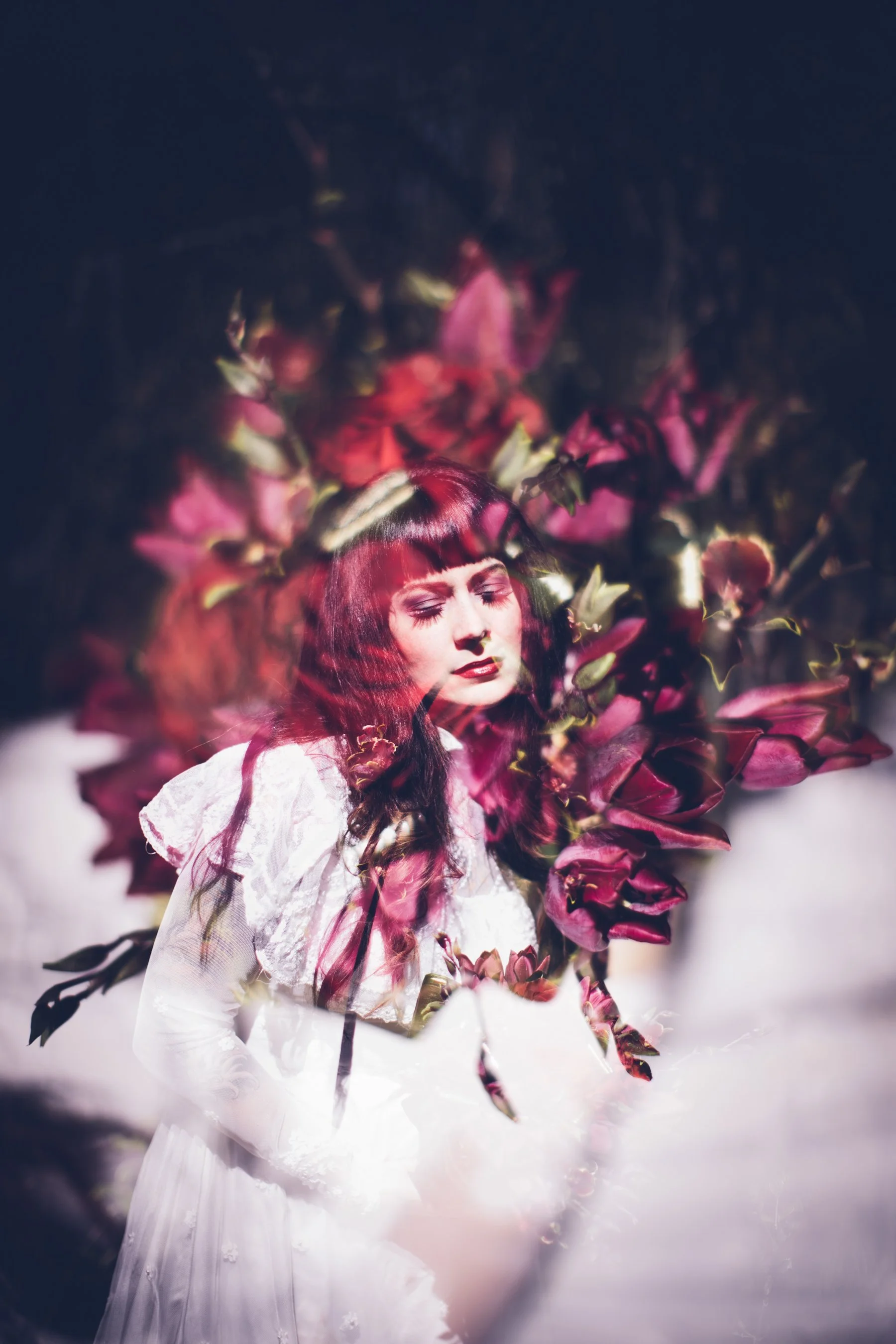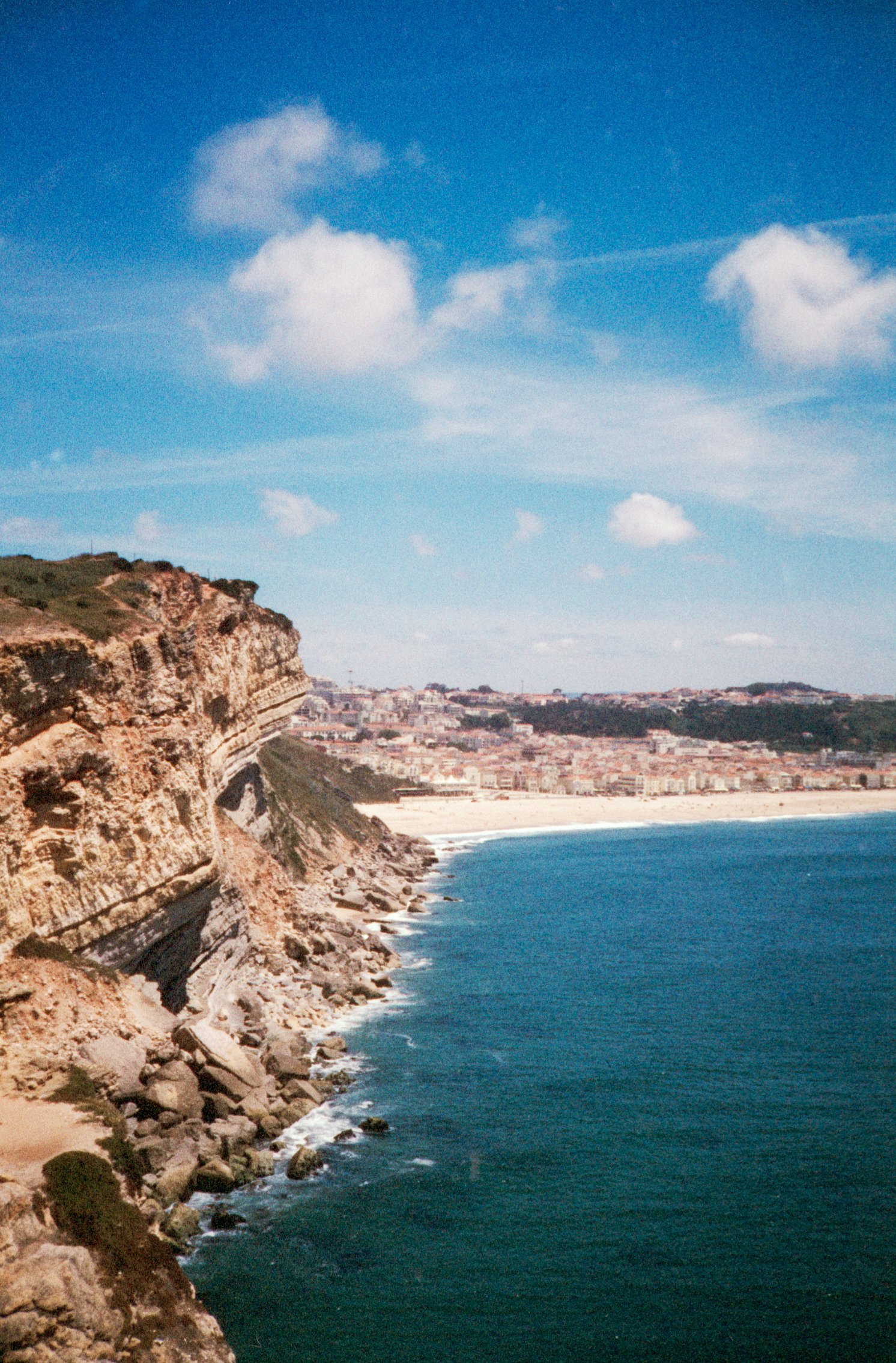(By using the links and/or codes below it supports Myles Katherine Photography. We may get a small kick back by you doing so.)
The Kodak Duaflex is so CUTE. It’s one of those cameras that deserves to be displayed on a shelf and is a definite conversation-starter. It is a 620 medium format camera, originally produced in 1947 with continued production into the early 1960s. It’s a Twin-Lens Reflex camera, meaning it works off of two lenses — one for the viewfinder and one for taking the photograph. One of the key features of the Kodak Duaflex is the waist-level viewfinder, so you look down into the top of the camera to take a photograph. This type of camera takes some getting used to, but once you get the hang of it, it’s such a fun and unique experience. Plus, it just feels good to reconnect with the old-school style of photography.
To be honest, I have no idea where my Kodak Duaflex came from. As a photographer for over a decade, I’ve become the friend and family member that everyone donates their cameras to, but I’m more than okay with that! My collection is constantly growing and it allows me to bring different cameras with me on every trip I take!
For my recent trip to Portugal, I grabbed the Kodak Duaflex off my shelf, tested the shutter, made sure I could open it up to put film in, and then tossed it in my suitcase! I had never used this camera before, so it was a bit of a risk hauling it all the way to Portugal. But at this point, I’ve realized these old, vintage cameras are surprisingly resilient. The more simple the camera, the longer they seem to last without issues. As long as the shutter works, you’re pretty much golden!
I’m so excited that my first roll of film actually turned out! I wanted to share a few of the pros and cons that I’ve experienced so far with this camera, and if you’d like to see how my photographs turned out, you can check out my YouTube video about the Kodak Duaflex, or you can scroll down to the bottom of this post!
PROS
I know how intimidating these cameras can be because of their age. They almost seem foreign to us because of how used to the digital age we are. But what’s hilarious about that is that these cameras are SO BASIC. They are about as simple as you can get. They are essentially a box with a hole in it. There are absolutely no settings other than the “I” or the “B” mode, which stands for “instantaneous” and “bulb”. The Instantaneous mode is about 1/30th of a second shutter speed, and the Bulb mode is for as long as you hold the shutter open. The Bulb mode is typically used for low-light situations or for capturing light trails and things of that nature. For this type of camera, I mostly stick to the “I” mode because the 1/30th of a second is slow enough for me! Personally, the simplicity of this camera is definitely a pro for me. There are no complicated settings or confusing buttons.
Another pro of this camera is the affordability. You can find them for about $15-35 on eBay or Etsy, or you might just happen to stumble across one in a thrift store if you’re lucky! They also tend to be in relatively good condition for their age because there is no battery compartment or anything for corrosion to occur.
I’m also pleasantly surprised by the sharpness of this camera! Not too long ago, I reviewed the Kodak Brownie Hawkeye. While I loved the images, they weren’t as sharp as I’d hoped they’d be. But I think my lens was also a little foggy. My images from the Kodak Duaflex though, were crisp and stunning! I truly couldn’t believe it. Especially with such a slow shutter speed. I was expecting them to be blurry and show some motion. It is definitely important to stand as still as possible when shooting with this camera though to avoid shaking the camera!
CONS
One of the main disadvantages of this camera is that 620 film isn’t produced anymore. However, you can purchase any 120 film, a few old 620 film spools and roll it onto the 620 film spool yourself! The film is the same size but the spools are different. If you don’t want to take the risk though, you can also purchase pre-spooled 620 film from the Film Photography Project. They have a really fun starter pack that I purchased, which contained the Kodak 100 TMAX black and white film that I used for my first roll of film with the Duaflex.
The slow shutter speed (1/30th of a second) can be a bit of a pain to work with. It’s nearly impossible to stand still enough for a crystal clear photo, but I literally just hold my breath as I take the photo to avoid motion blur! I will also set the camera on a hard surface and push the shutter gently, which also helps with steadiness. There’s also a tripod socket on the bottom of the camera if you just don’t trust yourself!
Another thing I noticed from this first roll of film is that the focusing distance is quite large. Apparently it is about 3 feet to infinity, which is much further than the majority of my cameras. So I was a little surprised by the portraits we took. In the moment. I felt that it was far enough away that it would be in focus, but when I got the images back, you’ll see that your subject has to be pretty far away for them to be in focus. This isn’t a huge deal and I don’t really mind it, but it will take some time to get used to that!
FINAL THOUGHTS
I’m so incredibly happy that I took this camera with me to Portugal. I know I’ll treasure these photos forever. The first roll of film with each of my cameras is very special to me because I’m truly just having fun trying to figure out if the camera even works. It’s an experiment that keeps me interested in photography. And getting my film back from the lab is always such an exciting day! I’ll definitely be taking this camera with me on future trips, especially if we’re comparing it to the Kodak Brownie Hawkeye. This camera is much sharper and I’m just thrilled with the images. I want to try out more multiple exposures and portraits with it in the future, too. Now that I’m aware of the focusing distance, I’ll be able to get a bit more creative.
If you found this post helpful or if you’d like to see more of my work, I’d love it if you considered signing up for my Patreon! For as little as $1 a month, you’ll get early access to all of my YouTube videos, plus tons of photos that I don’t post anywhere else. Depending on which tier you choose, you could also receive seasonal prints and/or discounts! I always use all of the proceeds towards cameras, film & processing. Find out more here!
If you have any questions, I’m always happy to help! You can contact me here, or leave a comment below! I’d love to know your thoughts on the Kodak Duaflex! Thanks so much for stopping by! You can also check out my Amazon storefront for more camera/film recommendations. :) Have a lovely day!
WHERE TO BUY THE KODAK DUAFLEX CAMERA:
FILM I USED:
Kodak TMAX 100 by the Film Photography Project
More 620 Film Options on B&H Photo
620 take-up spools if you want to spool your 120 film onto a 620 spool yourself:
120 film I recommend if you’re pre-spooling yourself:
Kodak 100 TMax 120 Film (what I used for the images below)
Fujifilm Neopan Acros 100 120 Film
<3 Myles Katherine
(click to enlarge images)























































































































